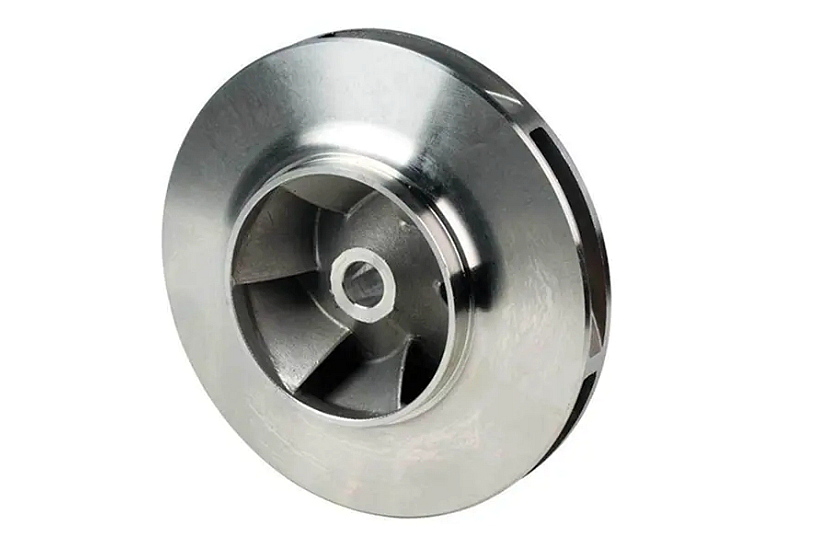Monel 404 Pump Body Lost Wax Casting Company
Introduction
Monel 404 is a nickel-copper alloy designed for exceptional corrosion resistance, excellent weldability, and strong mechanical performance, particularly in marine, chemical, and fluid handling systems. At Neway AeroTech, we manufacture precision Monel 404 pump bodies using advanced lost wax (investment) casting techniques, ensuring superior surface finish, dimensional accuracy, and consistent quality.
By applying vacuum-controlled lost wax casting processes, Neway AeroTech delivers Monel 404 pump components with minimal internal defects, outstanding corrosion resistance, and the strength required for reliable, long-term operation in aggressive industrial environments.
Key Manufacturing Challenges for Monel 404 Pump Body Casting
Precise chemical composition control to ensure corrosion resistance.
Effective molten flow control to avoid internal shrinkage and porosity.
Dimensional precision with tight tolerances (typically within ±0.05 mm).
Surface finish quality achieving Ra ≤1.6 µm without extensive machining.
Lost Wax Casting Process for Monel 404 Pump Bodies
The manufacturing process for Monel 404 pump bodies includes:
Wax Pattern Creation: Precision wax models produced using high-accuracy injection molding.
Shell Building: Successive coatings of ceramic slurry and fine sand for shell strength.
Dewaxing: High-pressure steam autoclaving (~150°C) removes wax, leaving a clean mold cavity.
Vacuum Melting and Pouring: Monel 404 alloy melted and poured under vacuum (<10⁻³ Pa) for superior cleanliness.
Controlled Cooling: Gradual solidification (~5-8°C/min) minimizes residual stresses.
Shell Removal and Finishing: Shell breakaway, shot blasting, CNC machining, and non-destructive testing (NDT).
Comparative Analysis of Pump Body Manufacturing Techniques
Process | Surface Finish | Dimensional Accuracy | Corrosion Resistance | Design Flexibility | Cost Level |
|---|---|---|---|---|---|
Lost Wax Casting | Excellent (Ra ≤1.6 µm) | High (±0.05 mm) | Excellent | High (complex shapes) | Moderate |
Sand Casting | Moderate (Ra ~12 µm) | Moderate (±0.5 mm) | Good | Medium | Low |
Forging + Machining | Good (Ra ~3 µm) | Very High (±0.01 mm) | Excellent | Low (simple shapes) | High |
CNC Machining from Billet | Excellent (Ra ≤0.8 µm) | Very High (±0.01 mm) | Good | Medium | High |
Pump Body Manufacturing Method Selection Strategy
Lost Wax Casting is ideal for complex pump body designs requiring superior corrosion resistance and minimal secondary machining.
Sand Casting suits larger, simpler pump components with less stringent precision demands.
Forging + CNC Machining applies to small-volume, ultra-high-strength pump bodies where forging improves internal grain structure.
Monel 404 Material Performance Matrix
Material | Tensile Strength (MPa) | Max Temp (°C) | Corrosion Resistance | Primary Applications |
|---|---|---|---|---|
550 | 425 | Excellent marine and chemical resistance | Pump bodies, marine equipment, piping systems | |
550 | 480 | Outstanding resistance to seawater and acids | Heat exchangers, pumps, valves | |
1100 | 500 | High strength, good corrosion resistance | High-pressure pump components | |
690 | 650 | Exceptional chemical and chloride resistance | Critical chemical pumps | |
930 | 980 | Superior oxidation and seawater resistance | Seawater pump bodies, offshore structures | |
890 | 800 | Excellent wear and corrosion resistance | Pump valve seats, trim parts |
Rationale for Monel 404 Material Selection
Monel 404: Selected for excellent resistance to acidic, alkaline, and marine environments with good weldability.
Monel 400: Chosen where slightly higher temperature or broader chemical resistance is needed.
Monel K500: Used when enhanced strength and hardness are critical under high-pressure conditions.
Hastelloy C-22: For aggressive chemical processes involving chlorides and oxidizing agents.
Inconel 625: Preferred for very high-temperature and highly corrosive seawater environments.
Stellite 6: Ideal for high-wear and corrosion-resistant pump trim components.
Essential Post-processing Techniques
Hot Isostatic Pressing (HIP): Enhances internal density, eliminating micro-defects at ~1150°C and 100 MPa.
Precision CNC Machining: Achieves tight tolerances (±0.01 mm) critical for hydraulic and sealing performance.
Surface Finishing Treatments: Improves surface smoothness and corrosion resistance for internal flow optimization.
Material Testing & Analysis: Verifies mechanical strength, corrosion resistance, and material integrity.
Industry Applications and Case Study
Monel 404 pump bodies manufactured by Neway AeroTech are extensively applied in the marine, chemical, and water treatment industries. Monel 404 pump housings operated for over 5 years without measurable corrosion or performance degradation in a critical seawater desalination plant project, extending maintenance intervals by more than 30% compared to stainless steel alternatives.
FAQs
What dimensional tolerances can Neway AeroTech achieve for Monel 404 pump body castings?
Why is lost wax casting ideal for manufacturing Monel 404 pump bodies?
How does Monel 404 compare to Monel 400 for pump applications?
What industries typically use Monel 404 pump components?
How does Neway AeroTech ensure corrosion resistance and mechanical integrity in Monel 404 pump castings?

